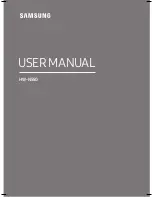
–12–
Cross-Zoning
The Cross-Zoning feature is designed so that a combination of two zones must be faulted
within a five minute period to cause an alarm on either zone. This prevents momentary
faults from causing an alarm condition. You can select four pairs of cross zones, keeping in
mind the following:
• Both linked zones must protect the same area
• Both linked zones must be in the same partition
• A Fire zone must only be linked to another fire zone protecting the same physical area
(see note below)
The four pairs of cross-zones are programmed in data fields 1*22, 1*23, 1*24, and 1*25.
DO NOT cross-zone a fire zone with a burglary zone under any circumstance. A fire
zone must only be linked to another fire zone and BOTH must be protecting the
same physical area (no walls or partitions separating them). As a guideline, we
recommend that spacing between fire cross-zones be no further than 9m.
Conditions That Affect Cross-Zone Operation
1. In the event of a continuous fault on one of the linked zones that lasts longer
than five minutes, a fault on the second zone will cause an alarm immediately.
2. If one of the zones in a pair is bypassed or has a zone response type set to 0,
the cross-zoning feature will not apply,
3. If an Entry/Exit zone is linked with an Interior Follower zone, be sure to enter
the Entry/Exit zone as the first zone of the pair. This will ensure that the
entry delay time is started before the follower zone is processed.
4 a. If a relay is programmed to activate on a fault of one of the zones, the relay
will activate without the other zone being faulted.
b. If a relay is programmed to activate on either an alarm or trouble, both
zones must trip before the relay will activate, and both zones must restore
for the relay to deactivate (if relay is programmed to deactivate on a Zone
List Restore).
Call Waiting Defeat Logic
Although this option does not directly prevent false alarms, it may prevent the central
station from taking action on a potential false alarm. After the panel's initial call to report
the alarm, if the panel attempts to make an additional call, perhaps for a cancel or a zone
restoral, an operator at the central station attempting to contact the premises to verify
whether or not the alarm is valid will hear the phone ringing indefinitely and will have to
dispatch on the call if call waiting is not defeated.
This option, enabled in programme field 1*42, will attempt to defeat call waiting on the first
out-going call attempt to both the primary and secondary numbers. It does this by dialing a
special sequence preceding the phone number (but after the PABX number). The panel will
dial *70 if using TouchTone multifrequencies and 1170 if using rotary decadic dial pulses.
The panel does not attempt to defeat call waiting on each call attempt, since the
phone company may not complete the call if the sequence is dialed on a phone line
that does not have call waiting.
Содержание VISTA-120
Страница 2: ...THANK YOU For Choosing Ademco s Vista 120...
Страница 9: ...1 PART 1 HARDWARE INSTALLATION PROCEDURES...
Страница 72: ...64 PART 2 PROGRAMMING THE SYSTEM...
Страница 151: ...143 PART 3 SYSTEM OPERATION AND TESTING...
















































